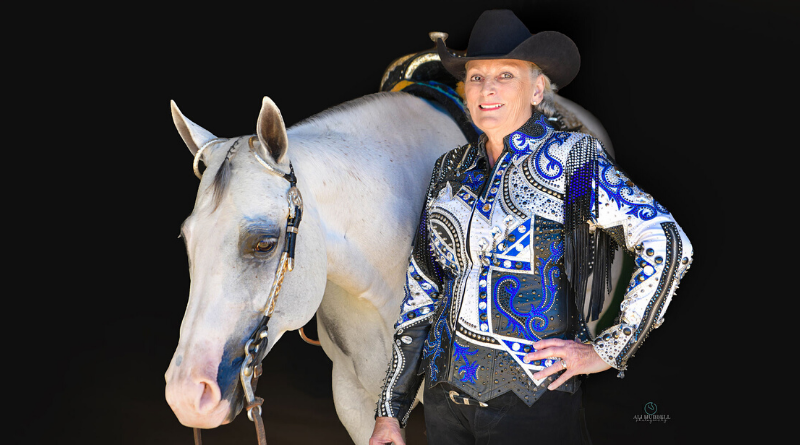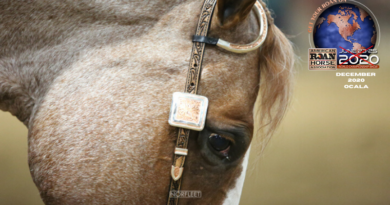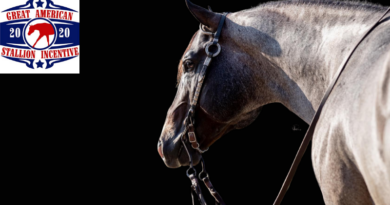Cleaning and Repairing Show Clothes
Q: Hi, Wendy. What do you suggest for cleaning and repairing show clothes?
As the premier horse show clothing consignment shop celebrating our 20th year in business, we have seen our fair share of show clothes that need some major help to become saleable. As part of our policy, we ask that show clothing be clean and in good repair before it is received by us in order to bring the most resale value. It really doesn’t matter how high the quality or original price tag – if the garment was not well cared for, the resale value will reflect that. However, many of our clients don’t know the first place to start, so we do offer cleaning and minor repairs as part of our chargeable service or would be happy to make recommendations to professionals we have had experience with.
We’ve all been there: you dismount from your horse, and you hear a sickening rip as you accidentally catch the fabric on the saddle when stepping down. You may notice afterward, much to your chagrin, your favorite crystals are also missing after your mishap.
There are dozens of scenarios to choose from that place our precious show clothes at risk, and we’ve all likely suffered at least one – not to mention the shared experience of pulling our show clothes out of the garment bag to the sight of dirt and makeup on the collar.
Repairing and Refreshing
If you’ve torn your show clothes along the seam, which is the most common type of damage we see, that’s typically an easy fix. Finding a good seamstress is invaluable, but if you’re handy with needle and thread, you can often repair simple tears along the seamline. YouTube has many sewing videos if you’re in a pinch. Your local dry cleaner likely offers a repair service or if the damage is severe you may want to get into contact with the designer to see if a professional repair is needed.
Another quite common repair that’s just the nature of show clothing is missing or loose crystals. It’s going to happen, but they are replaceable. In fact, many designers include extra crystals for this purpose. We recommend using the glue E6000 or Gem Tack for attaching crystals to your show clothes, but keep in mind that you just need a touch of glue! Extra glue around crystals and on the fabric is unsightly. If a crystal is a sew-on type, hand stitching it back on with a coordinating thread color is an uncomplicated repair. Dreamtime creations is a wonderful retail source for purchasing replacement crystals and accessories. www.dreamtimecreations.com/
Speaking of crystals – most flatback crystals have a foil backing which acts like a mirror, the light passes through the crystal glass and is reflected from the foil backing to give the crystal a sparkly diamond like appearance. Without the foil backing the light just passes through the crystals and they look like a piece of crystal glass. We have seen many consignment pieces with the crystal separating from the foil and falling off the garment, leaving the foil attached. This is usually attributed to the glue acting as a solvent and dissolving the foil’s adherence to the crystal but can also been seen when a garment is stored in an undesirable environment such as a hot trailer. Another helpful hint to keep your crystals sparkling is to avoid spraying hairspray while wearing your show clothing. Not only will the residue stick to your crystals, in turn dirt will stick to the residue leaving you with a dingy garment.
Your garment is going to get dirty on the inside wherever your bare skin is touching. As far as cleaning, it depends on the garment itself, and you must do a little investigation. Is there a label on your easy-care type garment that recommends handwashing? If so, the designer’s instructions are preferred. If no label can be found with care instructions, we often refer our customer to the designer for specifics, or we recommend using the time-tested method of spot cleaning in anwashcloth with a mild detergent for colors such as Woolight Darks Detergent. Get your washcloth sudsy with cool water and gently scrub any dirty areas on this inside that touched your skin or dirty areas on the outside. The sooner you can do this after wear, the least likely the stain will set. Be careful here if you have a light or white base because if you get the fabric too wet then you may splotch the fabric with an unsightly watermark. The purpose of spot cleaning is to not saturate the fabric with water.
If your garment is submergible in water and you are comfortable taking that leap, you may fill your bathtub with cool water and a mild detergent for colors or an Odor removing detergent such as Zero Odor. Take special care when a dark colored applique is on a white base. In my experience, dark colored appliques created from Ultrasuede and leather are most likely to bleed when submerged in water. It is a good idea to pre-treat any stains with stain remover such as Spray and Wash before submerging. Once the garment is submerged, gently swish around in the sudsy water and gently scrub any stains. You may be surprised at how much dirt is in the water. Rinse with cool water from your showerhead or refill the tub until the water runs clear. Do not let the garment sit too long or wring it out. Grab several towels to absorb the excess water and lay flat to dry. By the next day, you should be able to place on a hanger or mannequin to continue inconspicuous area.
To spot clean, I recommend carrying baby wipes in your garment bag to wipe off make up from around the collar immediately after use. For more in-depth cleaning, I recommend using a clean the drying process. Now is a great time to examine for missing stones and replace them once dry. Steaming is not recommended on items with crystals because the glue can soften and weaken the adhesive. Crystals can be gently wiped with Windex or other similar glass cleaner if they have any remaining residue.
When in doubt, handling your investment gently is always the best option.
A Good Dose of Prevention
Accidents happen, and we wear makeup and show our horses in dirt arenas, so avoiding clothing mishaps and wear and tear is impossible.
But you can also reduce the incidents by forming a few simple habits that are well worth your time.
Maintaining your show clothing is just a matter of making the way you handle them a routine. For example, putting on a jacket right before going into the ring, spot cleaning a garment carefully right after an incident occurs, and storing it inside a garment bag inside the house are all habits that help with longevity. Obviously avoid eating or drinking while wearing your garment.
Keeping your garment clean takes a bit of forethought. Underarm shields are wonderful for absorbing perspiration and can be changed daily during your show. A variety of different brands are available on Amazon. If you are a stress-sweater, these are invaluable to keeping your garment smelling fresh as body odor smells are the most difficult to remove. The worst smell that is most difficult to rid your garment of is the ammonia urine smell, so never store your garment in the tack stall or trailer during a horse show. You won’t realize the odor that has permeated it until it’s too late. However, spraying the inside of your garment with an odor eliminating spray such as Febreze or Lysol after each use will help neutralize odors. Let dry completely before storing in a garment bag with a dryer sheet for extra freshness.
Wearing a lightweight tee-shirt, body shapers or camisoles underneath your favorite show clothes can offer more than slimming and shaping qualities; they also keep your outfits cleaner! Our own best-seller, Sassybax Torso Trim, is a silhouette smoothing bra-camisole with no underwire that eliminates bra bulge and bra lines while helping you keep your show clothes tidier.
You more than likely invested several thousands of dollars in your wearable art and want to keep it pristine. By keeping your show clothing in good shape, you’ll reduce the time and expense of cleaning and repairing and realize more on your original investment when it’s time to resell. Plus, you’ll feel better in your well-kept clothes in the show pen.
While we can’t avoid the natural progression of what can happen when you mix horses, physical action, dirt, beautiful fabric, and embellishments, many of the after-effects are manageable and more often than not, easy to repair. So, do what you can ahead of time, and then: go enjoy showing your horse!





